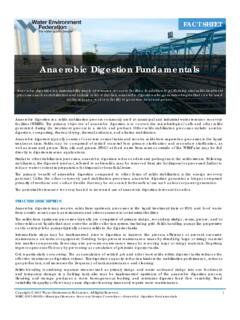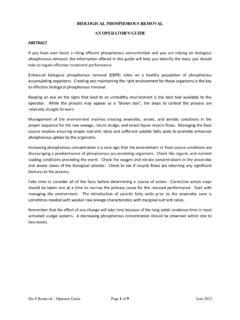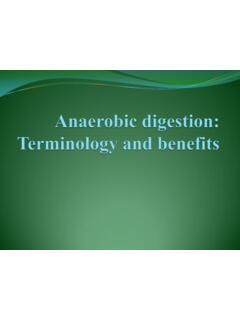Aerobic Digestion
Found 9 free book(s)Anaerobic Digestion Fundamentals
www.wef.orgAnaerobic digestion is a solids stabilization process commonly used at municipal and industrial water resource recovery facilities (WRRFs). The primary objective of anaerobic digestion is to convert the microbiological cells and other solids generated during the treatment process to a stable end product.
Anaerobic Digestion of Biowaste in Developing Countries
www.eawag.chGlossary Acidogenesis: The second stage of the conversion of large organic molecules to vol- atile fatty acids. Aerobic treatment: Degradation and stabilisation of organic compounds by microor- ganisms in the presence of oxygen. Anaerobic Digestion (AD): Degradation and stabilisation of organic compounds by microorganisms in the absence of molecular oxygen (bio …
Glossary of Wastewater Terms
www.mgsdistrict.orgAerobic digestion requires oxygen, anaerobic digestion the absence of oxygen. Denitrification . Biologically removing nitrate converting it to nitrogen gas. Disinfection . The use of chemicals to kill any disease causing organisms in the polished wastewater. UV light can also be used. Dissolved Oxygen (DO)
4 Methane production by anaerobic digestion of wastewater ...
sswm.infodigestion Unlike aerobic wastewater treatment systems, the loading rate of anaerobic reactors is not limited by the supply of a reagent, but by the processing capacity of the microorganisms. Therefore, it is important that a sufficiently large bacterial mass is retained in the reactor. For low rate systems the
Aerobic and Anaerobic Biodegradation - Polimernet
www.polimernet.comAerobic, unlike anaerobic digestion, does not produce the pungent gases. The aerobic process results in a more complete digestion of waste solids reducing buildup by more than 50% in most cases. The aerobic process also improves the environment of the workers and the animals and helps to keep pathogens in check.
Environmental Protection Agency Wastewater Technology …
www3.epa.govdigestion of solids, and treatment of the liquid portion. Anaerobic lagoons are typically used for two major purposes: 1) Pretreatment of high strength industrial wastewaters. 2) Pretreatment of municipal wastewater to allow preliminary sedimentation of suspended solids as a pretreatment process. Anaerobic lagoons have been especially effective for
BIOLOGICAL PHOSPHOROUS REMOVAL
www.mi-wea.orgThe Bardenpho process includes anaerobic, anoxic, aerobic, anoxic, and aerobic reactors in series with first stage aerobic mixed liquor recycle to the first stage anoxic reactor and return sludge recycle to the anaerobic reactor. Figure 4 illustrates the Bardenpho process. Figure 4 – Bardenpho Process
Wastewater Technology Fact Sheet: Package Plants
www3.epa.govand aerated sludge holding/digestion segments. Extended aeration systems are typically manufactured to treat wastewater flow rates between 0.002 to 0.1 MGD. Use of concrete tanks may be preferable for larger sizes (Sloan, 1999). Extended aeration plants are usually started up using "seed sludge" from another sewage plant. It
Total Solids, Volatile Solids - Biogas
biogas.ifas.ufl.eduTotal Solids, Volatile Solids Total Solids (TS)= Dry matter content of substrate Inverse of moisture content one of the most variable parameters between substrates water Volatile Solids (VS)= Combustible proportion of TS, organic matter Non-volatile Solids (Ash)= Inorganic material (Minerals, salts), does not contribute to methane








